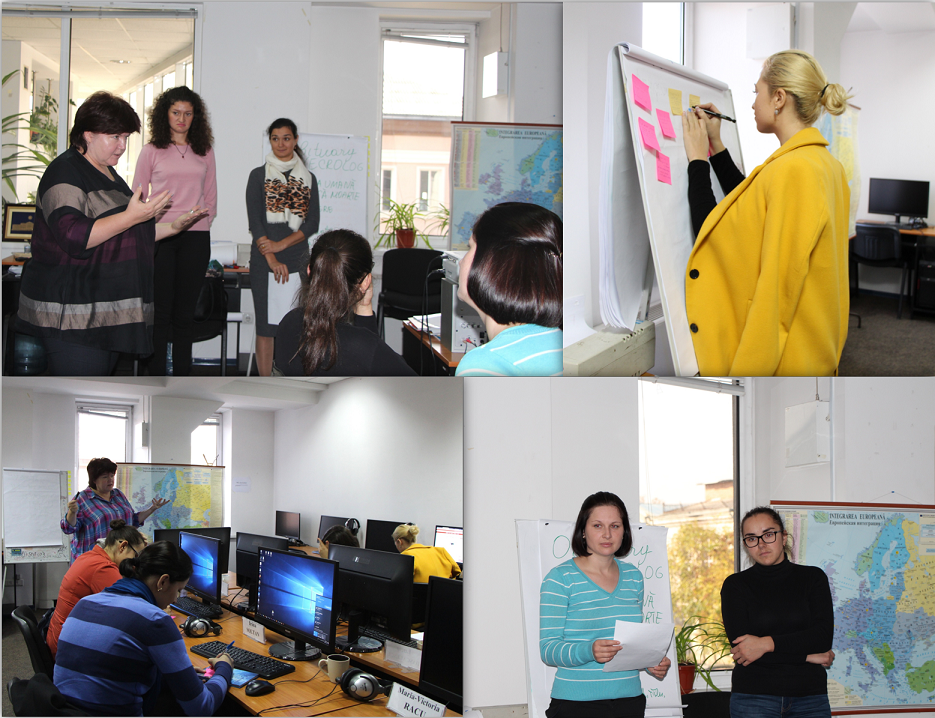“Long Articles”: How to write argued texts, necessary for people

Reportage, feature, documentary release and obituary are some of the new journalistic genres that the students of the School of Advanced Journalism have studied at the “Long Articles” course. Guided by Alina Radu, director of the Moldovan Newspaper “Ziarul de Garda”, the young people learned how to produce a good reportage; visited some events and reported about them; created a portrait sketch with great, but less well-known personalities as protagonists and learned the techniques of writing an obituary.
The course started with a brief information about the journalistic genres that belong to the category of long articles. The students have been familiarized with different types of reportage, their principles and structure, and the instructor insisted on the already known for them questions: Who? What? Where? When? Why? and How? Because, as Alina Radu says, whatever he/she writes, a good reporter is obliged to keep in mind these six questions. At the same time, she mentioned that, unlike the news, when producing reportages, the journalist can use various literary techniques, which allow him/her to describe the atmosphere more clearly and in detail. The course was followed by the practical part, and the students had to write a reportage, a portrait and an obituary.
How to come up with great ideas for reportage, where to find topics and how to write differently, excitingly and at the same in a captivating way? To find answers to these questions, the future journalists participated in various actions and discussed with local people and, in the process of writing the reportage, they took into account its basic elements: the presence of the reporter on the spot, the description of the entourage, the public interest and the collection of relevant data. After reporting, the students experienced their first experience in the feature genre. Due to practical exercises, they learned the characteristics of such a text – namely, the introduction, the expressiveness and the end of a history about a hero of the day.
The last day of the course was dedicated to the obituary, also called the mortuary announcement. It was discussed the purpose of writing an obituary and its structural aspects, and the students wrote a text in memory of a defunct personality.
The long articles written by the students were analyzed and evaluated both by Alina Radu and during the Romanian Stylistics Course with Cristina Mogâldea. The trainer said she wanted to teach the students how to make quality journalism by cultivating the thirst to write argued, deep texts, necessary for people. The students, in their turn, have greatly appreciated the work and documentation in the field, but also the freedom to choose and to make their own subjects for reportage.
The next course to be held at the SAJ is Ethics and Diversity in Mass Media.
